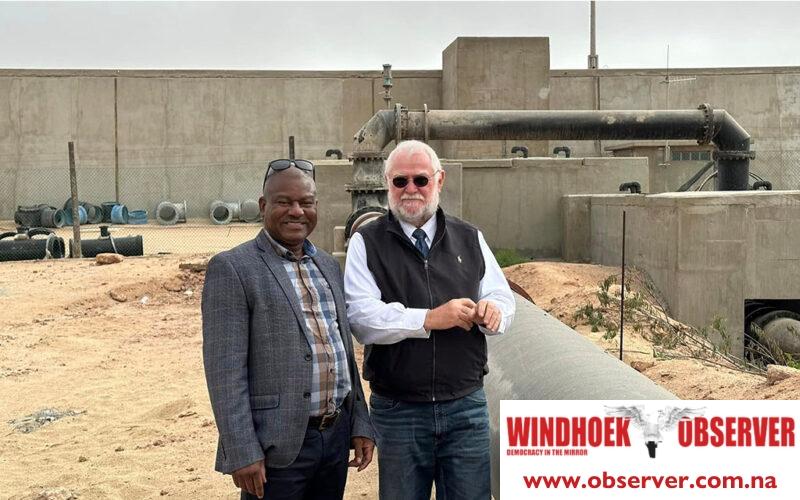Niël Terblanché
In a strategic move to combat the ongoing water scarcity in Namibia’s coastal and central regions, the Ministry of Agriculture, Water, and Land Reform has announced plans to start the construction of a second desalination plant in early 2025.
This project, set to enhance the country’s water infrastructure, will soon be submitted to the Cabinet for approval.
Agriculture Minister Calle Schlettwein confirmed that NamWater will collaborate with the Swakop Uranium on this initiative.
The new plant intends to significantly boost the Erongo Region’s water supply capacity by converting seawater into potable water.
This is in response to escalating water demands, particularly from the Namib Desert mining sector.
The existing Orano desalination plant at Wlotzkasbaken, constructed at a cost of N$3 billion, has been the primary source of desalinated water.
However, it currently provides up to 1,800 cubic metres of water per hour, while the Swakop Uranium Mine alone consumes around 1,000 cubic metres per hour, highlighting the urgent need for additional capacity.
Feasibility studies for the new plant have been completed, and the project is now in its final proposal stages.
Swakop Uranium’s Husab Mine, a key stakeholder in this project, has shown interest in financing the new plant.
Patrick Chizabulyo, Swakop Uranium’s vice president and human resources officer, emphasised the company’s commitment to reducing its reliance on NamWater through alternative water sources and recycling initiatives.
“This approach is critical, given that the mine uses more water than the combined consumption of Swakopmund and Walvis Bay,” Chizabulyo stated.
According to Minister Schlettwein, the second desalination plant is expected to have a modular capacity exceeding 20 million cubic metres per year.
“It will be developed through a public-private partnership, with NamWater and the government seeking funding from local and international development banks,” Schlettwein said.
The Cabinet has already approved the project’s first phase, which includes securing water supply systems for the central coast, Windhoek, and other parts of the country.
The central part of Namibia is experiencing a severe water crisis, with dam levels continuing to drop.
Abraham Nehemia, CEO of NamWater, highlighted this critical situation during a recent event at the Von Bach Treatment Plant in Okahandja.
“We are facing a challenge with water in the central areas. Whether it rains or not, all we need is to plan and find ways to get water,” he said.
Windhoek, which relies on the Von Bach, Omatako, and Swakoppoort dams, is experiencing critically low water levels, with current capacities drastically reduced compared to previous years.
Insufficient rainfall and increased demand have exacerbated the situation, pushing the city’s water supply to its limits.
The city authorities are pushing for a ten percent reduction in water usage, though efforts over the past year have fallen short of this target.
NamWater and the City of Windhoek have initiated a six-month awareness campaign on water demand management strategies.
Emergency measures include activating an emergency borehole scheme and improving water reclamation processes to supplement the dwindling supply from the main dams.
One potential solution to the water shortage issue is the Kavango Link Project.
Nehemia estimated that this project, which would act as a backup water source, would cost around N$7 billion.
Other suggestions include sourcing water from the Zambezi River and desalinating water from the coast.
Nehemia noted that while there is ample water in the Kunene River, the main challenge lies in treating and distributing it.
The Von Bach Dam, which supplies water to central areas including Windhoek, is considered nearly empty.
Despite these efforts, Windhoek’s water infrastructure, last upgraded in the early 1990s, is now inadequate for its growing population.
The city’s authorities are considering compulsory water-saving measures, which could force residents to reduce usage by up to 50 percent.
These measures highlight the critical nature of the situation, as failure to achieve significant reductions could severely impact all sectors of the city, from residential to industrial, including essential services.
Schlettwein said that the construction of the second desalination plant represents a proactive step towards addressing Namibia’s water scarcity and ensuring sustainable water management in the face of increasing demand from domestic and industrial users.




